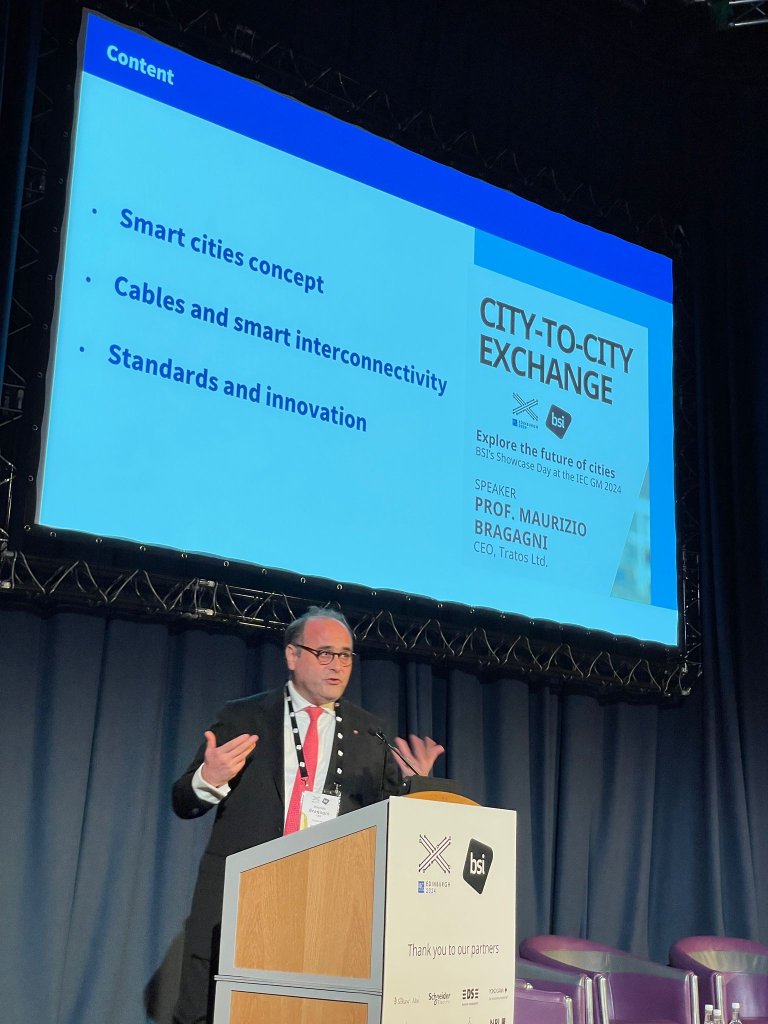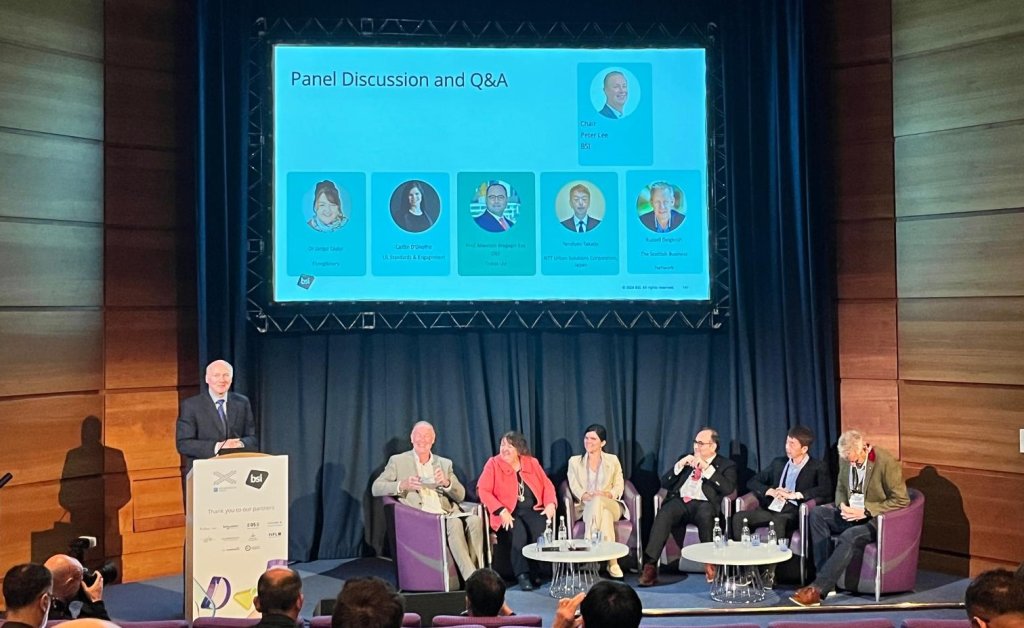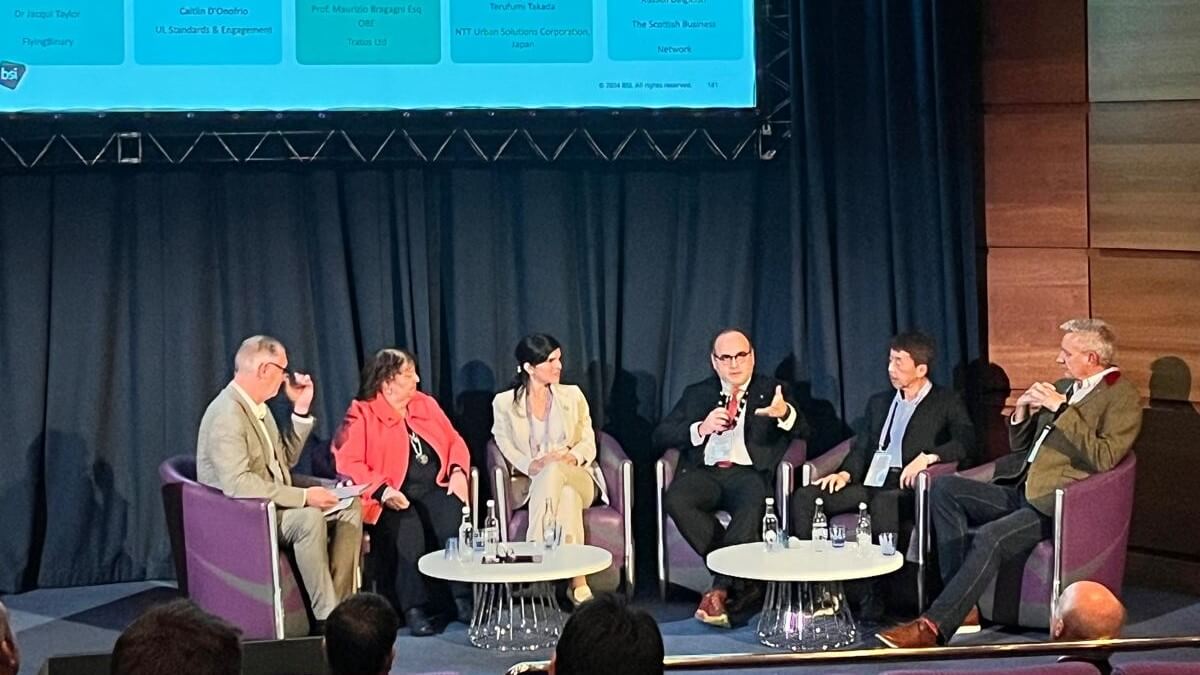On October 21, 2024, I was invited as a panellist at BSI’s Smart Cities Interexchange event in Edinburgh. At this event, representatives from local governments of cities across the world gathered to exchange insights on how smart cities operate and effectively offer services to their residents.
A Smart City integrates digital technology and ICT to enhance operational efficiency, share information, and improve the quality of life for its residents. The event provided an opportunity to spotlight the key role standards play in driving forward this digital transformation.

I shared my insights on how robust standards can fuel innovation, particularly within the context of building Smart Cities.
Smart Cities operate by connecting various sectors through advanced technologies—collecting data from citizens, devices, and infrastructure to enable data-driven decision-making. This model supports an urban environment that is efficient, sustainable, and citizen-centric. A Smart City combines digital solutions with traditional networks to improve essential services like transportation, energy, water, and waste management.
Essential components of this vision include:
- Smart Governance: Digital platforms that support data-driven decision-making.
- Smart Energy: Systems designed for optimal energy efficiency.
- Smart Mobility: Advanced transportation solutions like electric vehicles, bike-sharing, and real-time traffic management.
- Data-Driven Decision-Making: Big data and analytics to optimize city services, from traffic to waste management.
- Sustainability Initiatives: Prioritizing policies that minimize environmental impact.
The Backbone of Smart Cities: Cables
Cables are essential to this infrastructure, serving as the backbone for data transmission and control across all systems in a Smart City. High-speed, low-latency communication provided by fibre optic cables enables real-time data exchange between various components, from traffic signals to public safety systems. By integrating fibre optic cables, Smart Cities can handle the large data demands crucial for seamless communication.
Additionally, these advanced cables are vital for energy efficiency, supporting renewable energy integration and optimizing power use. In essence, cables act as the “nervous system” of a Smart City, providing the network through which data flows and enables the city to function seamlessly.
Standards: The Catalyst for Innovation
Standards are fundamental to creating Smart Cities that are interoperable and efficient. By providing a shared framework, standards ensure that technologies within a city can communicate effectively, preventing fragmentation that could undermine a city’s effectiveness. Robust standards offer clear guidelines that foster consistent adoption of new technologies, fuelling global growth in the Smart City market.
For instance, the International Telecommunication Union (ITU) and the International Electrotechnical Commission (IEC) establish regulations that manage the complex demands of power and data transmission, each addressing distinct technical specifications and safety protocols. However, a gap remains. Although innovation has made it possible to integrate fibre optics with electrical cables, these hybrid solutions have not yet achieved widespread adoption as a standard.
Bridging the Gap: The Case for a Unified Standard
A combined standard for fibre optics and electrical cables would simplify the deployment of hybrid cable solutions, which are essential for the seamless operation of Smart Cities worldwide. Unified standards would enable these hybrid cables to meet both the high data demands and safety requirements of a modern city.
The question remains: Why haven’t the ITU and IEC developed a unified standard to promote hybrid cable solutions on a global scale? As cities continue to grow and evolve, this unification could help foster greater innovation and efficiency, eliminating silos that hinder Smart City development.
The path toward smarter, more sustainable cities lies in the synergy between innovation and standards. By fostering innovation through robust, unified standards, we enable cities to create a cohesive, forward-looking infrastructure capable of meeting future challenges.
This year’s BSI Showcase served as a call to action for policymakers, industry leaders, and standard-setting bodies to bridge existing gaps, push for comprehensive standards, and ultimately drive the Smart City vision into reality.

